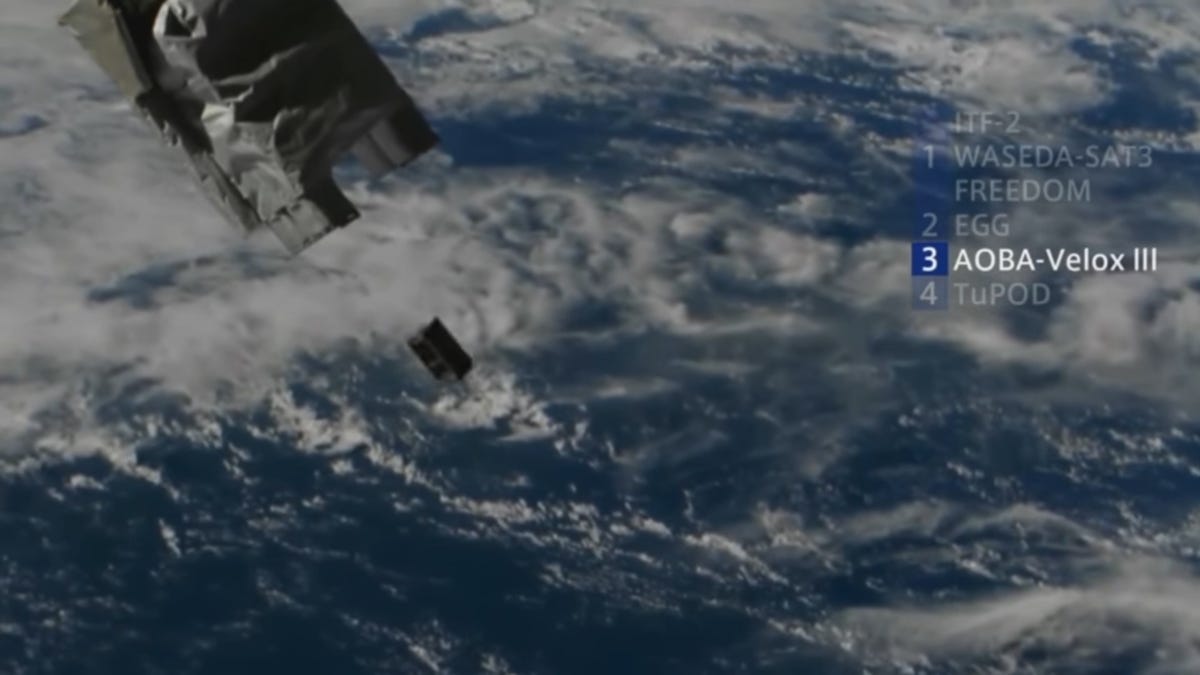Singapore's first ISS satellite can stay in orbit for twice as long as usual
The Aoba Velox-III is equipped with special thrusters that let it remain in orbit for six months, double the normal length of time a satellite would be expected to last.
Singapore's Nanyang Technological University has successfully launched a satellite from the International Space Station (ISS) for the first time.
The Aoba-Velox III was delivered to ISS by the Japan Aerospace Exploration Agency (JAXA) on a resupply rocket from the Yoshinobu Launch Complex at Tanegashima Space Centre. It's a nanosatellite that deserves special attention for its new thruster technology.
These new micro-thrusters allow the satellite to remain in for space twice as long as other similar satellites, according to the university.
"Traditionally, small satellites do not have thrusters due to modest budgets and insufficient space to mount the conventional thrusters used by bigger satellites," the University said in a statement. "Without thrusters, satellites have no means to keep them in orbit and will gradually lose altitude."
These new micro-thrusters will keep the satellite at a steady orbiting speed of 27,000 kmh for up to six months, double the three-month lifespan of similar satellites.
The Aoba Velox-III, which is now orbiting 400 kilometers above the Earth, also had a unique deployment. Instead of being launched into space with a rocket, the satellite was shot into orbit directly from a special launcher.
The improved thrusters could go a long way towards fighting the problem of space debris: Man-made trash such as the old satellites and spent rocket stages that create a field of debris around the earth. The problem is so bad that in 2014, the ISS had to move three times to avoid lethal chunks of space debris. If satellites are able to stay in space longer, new ones will need to be launched less frequently, so we could see fewer disposable satellites cluttering up the debris field.
CNET Magazine: Check out a sampling of the stories you'll find in CNET's newsstand edition.
Special Reports: All of CNET's most in-depth features in one easy spot.


